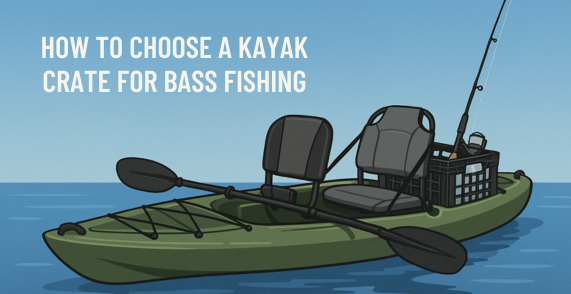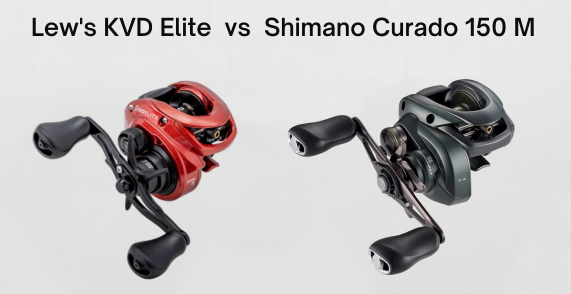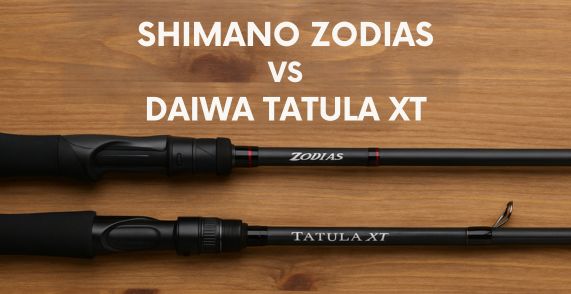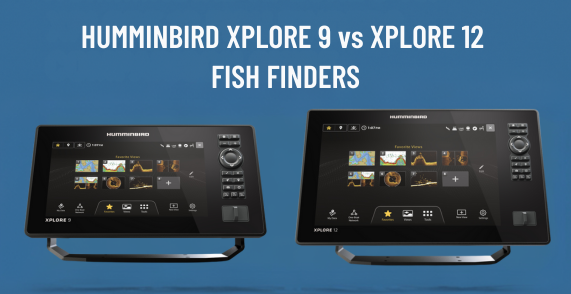In This Post
- 1 Key Takeaways
- 2 Features That Make or Break Your Bass Fishing Setup
- 3 DIY Milk Crate vs. Commercial Solutions
- 4 Size and Compatibility Requirements
- 5 Rod Storage and Tackle Organization Systems
- 6 Water Protection and Security Features
- 7 Top Commercial Crates for Bass Anglers
- 8 Match Your Crate to Your Bass Fishing Style
Key Takeaways
- Purpose-built crates offer superior organization and durability compared to DIY milk crate setups, with integrated features designed specifically for bass fishing needs.
- Size compatibility is critical – measure your kayak’s tank well dimensions before purchasing to ensure proper fit and weight distribution.
- Rod storage configuration impacts accessibility – look for angled holders that won’t interfere with your casting motion or seated position.
- Water resistance varies significantly between models, from basic splash protection to fully waterproof compartments for harsh conditions.
- Commercial crates provide expandable platforms with mounting systems that allow future customization as fishing techniques evolve.
The difference between a chaotic fishing trip and a successful bass outing often comes down to gear organization. A well-chosen kayak crate transforms your tank well from a cluttered storage space into an organized command center, keeping tackle, tools, and rods secure and accessible when targeting bass.
Features That Make or Break Your Bass Fishing Setup
Bass fishing demands quick technique changes and multiple rod presentations. A kayak crate serves as the foundation for this tactical flexibility, but not all crates deliver the same performance.
The most critical features include integrated rod holders positioned at angles that won’t interfere with casting, secure latching systems that protect gear during rough water, and sufficient storage capacity for multiple tackle boxes.
Weight distribution becomes vital when fully loaded. Proper crate placement and balance are necessary for maintaining kayak stability. Modern crates address this challenge through thoughtful design that distributes weight evenly across the tank well.
Construction quality separates premium options from basic containers. Select equipment that withstand marine environments, include UV-stabilized materials and impact-resistant construction for long-term durability.
DIY Milk Crate vs. Commercial Solutions
The classic milk crate remains popular among budget-conscious anglers, offering a blank canvas for customization at minimal cost.
These standard 13x13x11-inch containers provide excellent drainage through their honeycomb design and accept aftermarket accessories like PVC rod holders. DIY enthusiasts can create functional systems for under $50, including basic rod storage and tackle organization.
Traditional Milk Crate Advantages
Traditional milk crates excel in simplicity and affordability. Their open design allows water to drain freely while preventing gear from shifting during transport.
The honeycomb structure provides numerous attachment points for custom modifications, and their lightweight construction won’t significantly impact kayak performance. For anglers who enjoy building and customizing their setup, milk crates offer unlimited creativity at a fraction of commercial prices.
Purpose-Built Crate Benefits
Commercial kayak crates address the limitations inherent in DIY solutions. Products like the YakAttack BlackPak Pro and Wilderness Systems Kayak Krate feature integrated components designed specifically for kayak fishing.
These crates offer superior weather protection, professional aesthetics, and engineered mounting systems that eliminate guesswork in accessory placement.
The key advantage lies in their systematic approach to gear management. Rather than adding features piecemeal to a basic container, commercial crates function as expandable platforms with pre-engineered mounting points, allowing seamless integration of additional accessories as fishing techniques evolve.
Size and Compatibility Requirements
Proper fit determines both functionality and safety. Many fishing kayaks can accommodate crates in sizes such as 12×12 inches or 12×16 inches, but it’s vital to measure your kayak’s tank well to ensure proper fit.
However, external dimensions don’t tell the complete story – interior space varies significantly between models, affecting actual storage capacity.
Measuring Your Kayak’s Tank Well
Before selecting any crate, measure your kayak’s tank well dimensions carefully. Consider both length and width, but also factor in depth restrictions that might limit crate height.
Some kayaks have curved tank well bottoms or interference from bungee attachment points that affect crate placement.
Account for clearance around the crate edges. A crate that fits perfectly might become difficult to remove when wet or when your hands are cold. Allow at least half an inch of clearance on all sides for practical handling.
Weight Distribution and Balance
Weight placement affects kayak stability more than total weight. A fully loaded crate positioned too far back can make the kayak bow-heavy, while excessive weight in the tank well might raise the center of gravity.
Consider how the loaded crate weight compares to your body weight and adjust gear distribution accordingly.
Test different loading configurations during calm conditions to understand how weight affects your specific kayak’s handling characteristics. Some anglers prefer to keep heavier items like tackle boxes in the main compartment while storing lighter gear in lid compartments.
Rod Storage and Tackle Organization Systems
Bass fishing success often depends on having multiple presentations ready simultaneously. Tournament anglers typically maintain separate rods for topwater, finesse techniques, and power fishing applications, requiring organized storage that keeps each rod accessible without tangling.
1. Rod Holder Configuration
Rod holder placement determines both storage efficiency and casting ergonomics. Vertical holders mounted directly behind the seat create interference during casting motions, while angled tubes provide secure storage without impeding rod manipulation.
The YakAttack BlackPak Pro addresses this with tethered rod holder tubes that include built-in rod leashes for additional security.
Consider rod length compatibility when evaluating holder designs. Bass fishing rods typically range from 6’6″ to 7’6″, requiring holders that accommodate this variety without creating clearance issues under low-hanging vegetation.
2. Tackle Box Compatibility
Standard 3600 and 3700 series tackle boxes represent the backbone of bass fishing organization.
The Wilderness Systems Kayak Krate accommodates multiple tackle boxes, providing extensive storage for technique-specific tackle arrangements.
Plano Sportsman’s Totes offer another organizational approach, allowing tackle categorization into easy-to-locate sections.
These containers work particularly well with soft plastic storage systems like Lure Wraps that secure baits within compartments.
3. Quick Access Design
Bass fishing demands rapid lure changes to match changing conditions. Crates with easily accessible compartments and removable tackle bags facilitate streamlined gear selection.
The Plano Kayak Soft Crate functions as both a stand-alone tackle bag and an insertable crate liner, providing flexibility for different fishing scenarios.
Lid-mounted storage compartments offer immediate access to frequently used items like soft plastics, scissors, and measuring tools without opening the main crate compartment.
Water Protection and Security Features
Water exposure varies dramatically between calm lake fishing and rough saltwater conditions. Understanding the difference between water-resistant and waterproof protection helps match crate capabilities to fishing environments.
Water Resistance vs. Waterproof Options
Water-resistant crates like the Wilderness Systems Kayak Krate protect against rain and minor splashes but aren’t designed for submersion.
These models work well for protected freshwater fishing where complete immersion is unlikely.
Truly waterproof crates feature sealed gaskets and secure latching systems that maintain dry storage even during capsizing.
The blow-molded construction of premium models creates seamless shells without weak connection points that might allow water intrusion.
Mounting and Theft Prevention
Secure crate attachment prevents gear loss during rough conditions or transport. While kayaks typically include bungee cords in the tank well, additional straps provide superior security.
Attach straps from the crate to gear track mounts or deck loops for maximum retention.
Some crates include basic theft deterrent features like locking mechanisms for use in popular fishing areas. However, the primary security focus should be preventing accidental loss during fishing activities.
Top Commercial Crates for Bass Anglers
The commercial market offers several standout options, each addressing different aspects of bass fishing gear management through unique design philosophies and feature sets.
YakAttack BlackPak Pro 13×13 Performance
The YakAttack BlackPak Pro represents the premium tier of kayak crates, featuring UV-stabilized injection-molded construction designed for professional fishing applications.
Its GridLoc 2D mounting system transforms every panel into attachment points, supporting extensive customization without additional drilling.
Assembly requires patience but results in exceptional build quality. The interlocking tongue-and-groove panels create a rigid structure secured with stainless steel hardware.
Users consistently praise its durability, and many note that the contents remain relatively dry even during splashing or rain.
Wilderness Systems Kayak Krate Tackle Capacity
For anglers preferring ready-to-use solutions, the Wilderness Systems Kayak Krate offers blow-molded convenience without assembly requirements.
Its single-piece construction eliminates potential failure points while providing dual compartment storage – a main area suitable for live well use and a clear lid compartment for frequently accessed items.
Despite marketing claims of water resistance, some users report performance below expectations for the price point. The engineering trade-off between no-assembly convenience and waterproof sealing creates a disconnect between user expectations and actual capabilities.
Budget-Friendly Alternatives
The YakGear Kayak Angler Crate provides an affordable middle ground between DIY milk crates and premium commercial options. While prices may vary, it offers basic functionality with customization potential through add-on rod holder systems.
Soft-sided options like the Plano Kayak Soft Crate emphasize portability and weight savings.
Made from water-resistant fabric with rigid inserts, these crates fold for storage while providing adequate protection for day trips on calm water.
Match Your Crate to Your Bass Fishing Style
Successful crate selection requires honest assessment of fishing frequency, target waters, and gear management preferences.
Weekend anglers fishing protected lakes have different requirements than tournament competitors facing varied conditions.
Budget-conscious minimalists benefit from DIY milk crate setups customized for specific techniques. This approach provides core functionality while allowing gradual system evolution as fishing skills develop.
Serious tournament anglers and frequent fishers justify premium crate investments through improved durability, professional appearance, and integrated features that boost on-water efficiency.
These systems support complex gear arrangements needed for competitive bass fishing.
Consider your kayak’s specific design and your physical fishing requirements. Some crates work better with particular kayak models, while others excel in certain fishing environments.
The ideal crate transforms your kayak into a well-organized fishing platform that supports your specific approach to bass fishing success.







